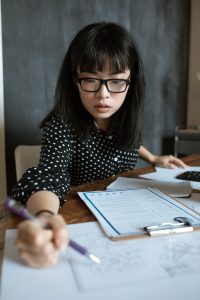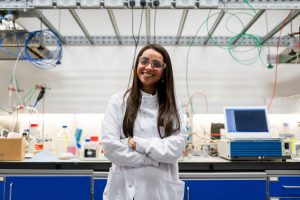By Tom Burt (Partner, Sofinnova Partners) & Nick Hutchinson (BSG Lead, Mammalian Cell Culture, FUJIFILM Diosynth Biotechnologies)
The development of antibody therapeutics requires large amounts of cash to sustain nascent companies while they demonstrate the safety and efficacy of their products in clinical trials. It is estimated that it takes over a billion dollars to bring an antibody therapeutic to market. In our last post (1) we described how biotech firms use pre-seed and seed funding to get their ideas off the ground, but following these, they typically rely on VCs for their next rounds of finance. The first round of VC funding or Series A funding can run into tens of millions of dollars.
Ori Biotech, a company developing a manufacturing platform for cell and gene therapies, raised $30 million of additional funds from a group of VCs, having initially raised $10 million in seed funding. The team believe the Series A funding is sufficient to develop a minimum viable product, the earliest version of the technology that can be released to the first customers for them to provide feedback and allow subsequent improvement cycles.
In an interview published in March 2021, Ori Biotech CEO, Jason Foster, advised start-up companies seeking Series A investment to start by developing a comprehensive understanding of the market for the technology and how to pitch effectively to potential investors. Secondly, he recommended firms target the right investors, as different investors specialize in different sectors and investment stages. Finally, he emphasized that fundraising is a full-time job, so companies should ensure they have sufficient support and time allocated to this critical activity (2).
Series B Venture Capital funding
AgomAb, is a Belgium start-up that is working on regenerative pathway modulators in inflammatory, metabolic and fibrotic diseases. It has raised two rounds of VC funding. Scientists at the company have drawn upon research from the 1990s that suggested hepatocyte growth factor (HGF) and the HGF-MET pathway might have regenerative potential. Founded in 2017, the company raised $25 million in 2019 in a Series A funding round, which it used to perform research on a set of full and partial MET agonists. These had been discovered through a partnership with argenx, which gave AgomAb access to the SIMPLE antibodyTM technology platform that raises antibodies with variable regions derived from the immune systems of ‘outbred’ llamas.
AgomAb’s Series A funding allowed it to progress its lead antibody candidate, AGMB-101, into Investigational New Drug-enabling toxicology studies, but the company needed additional funding to enter the clinic and so raised a further $74 million in Series B funding. Significantly, AgomAb considers that AGMB-101 could be efficacious in a range of disorders and represent a pipeline-in-a-product; however, it is also seeking to expand its pipeline beyond this lead candidate (3).
So, what’s the difference between Series A and Series B funding? Tom Burt of Sofinnova Partners points out, “The AgomAb example highlights that the amount of capital raised in Series B is larger, which in this case this is helpful because of the high costs of clinical development activities, and that the scope of what the business must achieve has evolved. In many instances, the two rounds of funding might seem similar and represent a continuum, with the Series B round being led by the same Series A investors. Redmile and Cormorant, two well-known US-based crossover funds, led this funding round.”
“Crossover investors can be considered as VCs that invest in promising companies that have the near-term potential to list their shares on a stock exchange in a financing round known as an Initial Public Offering [IPO]. They are a relatively new addition to the venture capital continuum. While a crossover investor will still need to be convinced of the potential in the company’s pipeline, they also have a focus on the public markets,” he says.
Cross-over investors can be more flexible around the clinical stage of development and can finance preclinical to Phase 3 clinical-stage companies if they believe that sufficient appetite exists amongst public market investors for the IPO candidate. Typically, the crossover investor[s] will seek to raise a significant amount of funds in a Series B [and sometimes Series A round] with the committed intention of supporting any IPO round alongside traditional institutional investors.
In our final post of this 4-part series, we will look at the final stages of the financing cycle, including how crossover investing has altered valuations of early-stage biotech companies. We’ll examine the case of EpiMab and discuss how investors in a company like this might look to exit and generate a return on their investments.
We hope you’ll join us next week for the final post in this series, Exit Strategies for Investors in Antibodies.
(1) Burt T. & Hutchinson N. (2021). Funding the Development of Antibody Innovations. Part 2: Business Angels and Venture Capitalists.
(2) Finerva (2021). Ori Biotech – Fundraising & Growth. March 12, 2021.
(3) Taylor, P. T. (2021) AgromAb raises $74M to develop regenerative pathway modulators. Fierce Biotech. March 10, 2021.



